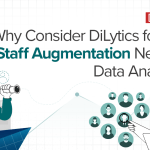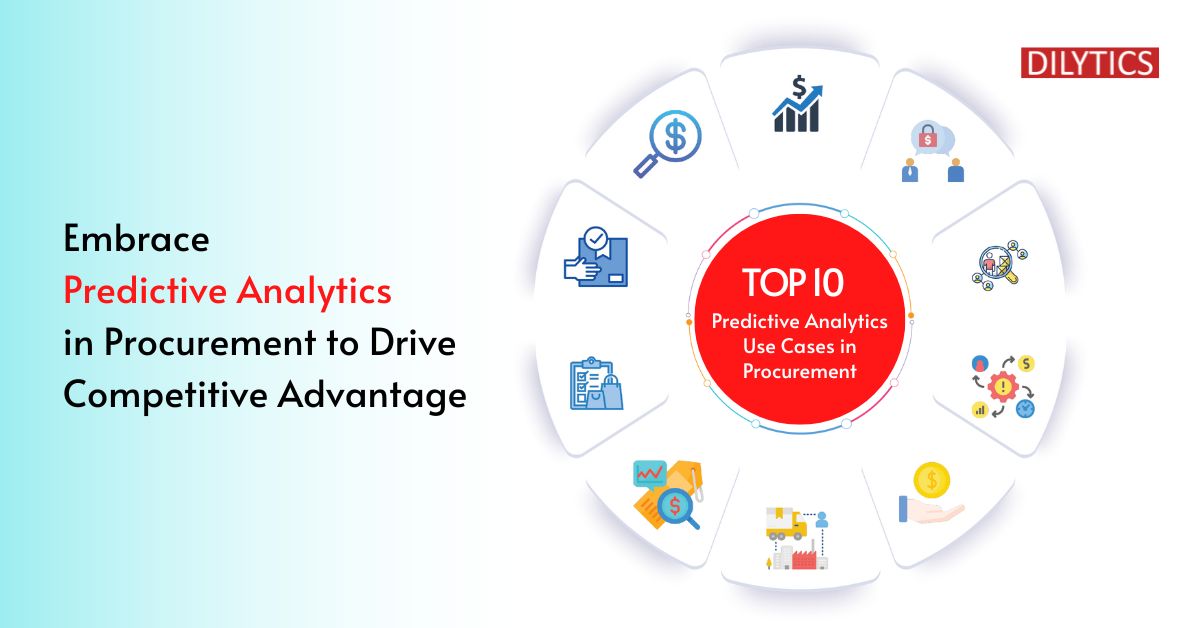Traditionally, the procurement function has been focused on cost savings and has delivered year-on-year savings successfully. While this remains an important objective for procurement teams, the current growth rate in procurement savings is not sustainable. Moreover, unpredictable materials and services needs and complex supply chains are creating new expectations from procurement teams – of bringing in agility and risk-mitigation techniques to these processes.
However, procurement teams seem to be stuck in the past as, more often than not, they are found to be mainly reacting to issues. Instead, they need to look forward and strategize. With access to large volumes of data, procurement teams need to adopt predictive analytics which can turn this data into powerful insights, at scale, and at speed, without relying on the capacity of individual buyers. This will enable procurement teams to transform themselves into becoming key strategic contributor to the company which will make their role more rewarding while delivering significant value to the company.
Predictive analytics is considered as an advanced practice in the procurement function of most companies. However, its move from ‘nice-to-have’ practice to ‘must-have’ practice is imminent, as it has profound implications in terms of raising data-driven decision-making to an elevated level. There are several use cases of predictive analytics in the procurement space where it has lived up to this promise. Here, in this blog, we will be discussing 10 such use cases.
Use Case 1: Spend Analytics
Spend analytics is the process of collecting, cleansing, classifying and analyzing expenditure data with the purpose of decreasing procurement costs, improving efficiency, and monitoring controls and compliance. Predictive analytics can help in spend analytics by leveraging machine learning algorithms in relation to time-series forecasting, to:
- predict spends in different categories
- classify the spend as maverick spend or otherwise
- classify whether the spend is associated with the right commodity UNSPSC codes (United Nations Standard Products and Services Code) for audit purposes
- decide whether to set up an agreement/contract with a category supplier
Use Case 2: Price Negotiation
One of the key steps in successful negotiations with suppliers is to prepare a ‘fact base’ that contains key information from previous purchases. Predictive analytics can help in preparing this fact base. For example, assume that a procurement team spends a significant amount of money on purchasing raw materials through multiple transactions from several suppliers. A predictive model can help in grouping those historical purchases into statistically significant clusters. When next time, an item has to be purchased, this predictive model will help in identifying the cluster and provide information about the average price of similar purchases, list of available suppliers and the prices they offer. Equipped with this fact base, the procurement teams can go to the negotiating table on a much surer footing.
Another way by which predictive analytics can help procurement teams during negotiations is by providing ‘should-cost models’. Should cost models are cost models that take into account all the inputs costs, including labour, material and overhead, that go into producing a product or service. This type of cost modelling provides a wealth of information about what an item or product should cost. This information can be used by procurement teams to negotiate better price outcomes with suppliers.
Use Case 3: Supplier Selection
Supplier selection is an important element of procurement function. It can become a very complex process when the number of suppliers grows into the thousands and spend in the tens and hundreds of millions. In such cases, predictive analytics can help procurement teams by enabling them to assess how different suppliers will likely perform against multiple variables on a given purchase order, or, to predict which supplier can be expected to perform the best given the parameters of a specific purchase. To provide this information, predictive analytics models take into consideration several supplier performance indicators such as cost, quality, delivery commitment, lead time, service, technical capabilities, financial position, flexibility, facility. Equipped with this information, the procurement teams can identify the best suppliers to work with.
Use Case 4: Supplier Risk Identification
Procurement teams need to be able to predict supplier risks in order to prevent their occurrence. This requires them to anticipate possible disruptions that can happen in the supply of materials from suppliers. To achieve this, procurement teams can leverage predictive analytics to arrive at the worst-case scenarios that may potentially lead to such disruptions. Predictive analytics can utilize internal data available from ERP systems and external data available via sources such as sensors, newscasts, social networks to identify supplier risk to deliver goods or services in time, in right quantity and of right quality. With availability of such insights on a regular basis, procurement teams can ensure that their supplier ecosystem stays healthy at all times.
Use Case 5: Payment Terms Optimization
Payment terms are the conditions under which a company agrees to pay for goods or services from suppliers. Optimizing payment terms can help companies improve their cash flow by reducing working capital costs and late payment penalties. It can also help to improve supplier relationships by ensuring that suppliers are paid on time. In order to optimize payment terms, procurement teams need to collect data on past payments, invoices, and supplier performance. This data can then be used to train a predictive analytic model with machine learning algorithm to predict optimal payment terms for new invoices.
Use Case 6: Inventory Optimization
Predictive analytics can help to determine what and how much to procure, from which suppliers, at what price and at what time. While ordering large lot sizes yields benefits in terms of quantity discounts, it increases the amount of safety stock and hence the carrying costs. Similarly, while ordering small lot sizes reduces carrying costs, it increases ordering costs and may result in shortages. By anticipating the varying circumstances in demand, lead time, unit costs, vendor commitment, and environmental factors, predictive analytics can help optimize inventory while meeting customer demands.
Use Case 7: Price Hedging
Companies that purchase commodities struggle to manage the risk related to commodity prices. To lower this risk, hedging strategies based on purchasing of financial instruments such as commodity derivatives are generally put in place. These financial instruments add a financial cost of their own, especially when prices move in a non-desired direction. This impact is amplified for non-dollar-based companies as derivatives are usually bought in US dollars, which adds another risk of exposure to exchange rates.
In such scenarios, adopting predictive analytics can help companies model uncertainty and predict future outcomes by identifying correlations and trends among the variables and the prices of goods and services. This information can be used to devise price hedging strategies.
Use Case 8: Order Configurations
Predictive Analytics can be employed to create order configurations for repeat buyers. This will help in reducing order processing time and encouraging the use of standard order templates. This will also allow companies to save costs by consolidating similar requirements and aggregating orders before they are placed.
Use Case 9: Goods Delivery Time
Timely delivery of material is important to ensure successful execution of a project. Predictive analytics can help in providing estimated delivery time for materials by utilizing historical data of closed purchase orders, item number, quantity, delivery time, geographical location of supplier.
Use Case 10: Identification of Value Opportunities
By bringing pattern analysis and price anomaly detection to decision makers in real time, predictive analytics can empower category managers to move quickly when disrupting events create ad hoc opportunities for price advantage.
Conclusion
There is far too much to gain through predictive analytics for procurement teams to not pursue it. At the same time, it also looms as a competitive threat for companies – one that will widen the gap between companies who’ve mastered the discipline and those that haven’t.
In other words, failing to embrace predictive analytics in procurement function isn’t just a matter of opportunity cost. It’s also a competitive threat that could see companies seize business from others that have fallen behind.
The mindset to learn from the past to predict the future, is what companies need to embrace, here and now, in order to drive competitive advantage. There is no other choice.
DiLytics has extensive experience in partnering with companies to help them transform their procurement function by leveraging insights from data. For any queries related to this topic, please reach out to us at [email protected].





